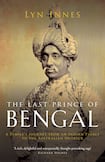
For five decades Lyn Innes has been one of the most quietly authoritative yet deeply influential practitioners of Irish studies.
Innes was arguably the first scholar to offer a sustained postcolonial interpretation of analogies between African and Irish writers in The Devil’s Own Mirror, a book based on her Amherst doctorate, done in the 1960s, which brilliantly combined and compared analyses of Irish and African writing – notably Synge and Achebe. She was one of the first to write a book-length study of the versatility of roles played by women such as Constance Markievicz and Eva Gore-Booth in our national revival.
Through these years she was also producing work in ever-widening contexts – a book on Achebe, which cemented a deep, growing friendship; a scholarly study of the ironies surrounding the story of Ned Kelly; a history of the contribution of black and Asian writers to British culture between 1700 and 2000; and, perhaps inevitably, Cambridge University’s definitive account of postcolonial literatures in English.
Such a scholarly range is awesome but also mysterious, raising the question of how the author could write so subtly on such a range of international cultures. The Last Prince of Bengal provides most of the answers, for it turns out that Nawab Nazim was her forefather. He ruled a vast area from the Himalayas to Bengal, a zone three times the size of Great Britain. Yet, despite all their attempts to secure financial rights and full social recognition by the British, the Nawabs were cast out by the British and by Indian fellow-princes.
English chambermaid
Mansour Ali Khan’s crime was to have married an English chambermaid, Sarah Vennell. This gave the British the opportunity they needed to cut him down to size.
The book is a rich tapestry of family narrative in the course of which various intolerances of nation, ethnicity, class and gender are woven into a story that is deft, alive to irony, and alert to many human foibles – it is a work in which intellectual audacity is matched by sound research and textual scruple. The result is a masterpiece of patient, lucid analysis.
In seeking to explain and explore her own identity as an Australian, Innes tells of how a family could go from royal durbars to a life of lonely sheep-shearing in the Australian outback. Literary scholars are well familiar with stories of an exiled Russian nobility reduced to penury after 1917, or of the mendicant Gaelic chieftains who fled Ireland in 1607. Here is a wholly new and surprising account of the ways in which the internal victims of such extirpation – this time of Indian nobility – often turned to literature as an alternative means of seizing power.
Some of the most moving passages in this book focus not only on the men who lost out but on the skill with which their female descendants took to writing as a way of keeping the family afloat. They are the Vladimir Nabokovs and Tadg Ó Cianáins of this forced removal.
Threat
When Mansour Ali Khan was “allowed” to visit Britain in 1869 to press his family claim, his handsome, exotic persona won maximum publicity in the press; but in private the political elite saw him as a threat. Bengal was, after all, the site and stake of the British imperial presence in India. The chambermaid Sarah Vennell was but the fourth of his many wives and the relationship petered out, though for a time she was given a house appropriate to a woman of her position.
That relationship produced the Nawab’s fourth daughter, Vaheedoonissa, who even 80 years later corresponded with Australian relations, sending the gift of a perfume bottle which Lyn Innes still possesses. Sarah also gave birth to two boys, Syed and Nusrat. But her husband was subject to a classic “surrender and regrant” policy which stripped most of his wealth and offered no pension to Sarah, “since the connection was a discreditable one”.
Sarah’s children
Some of Innes’s most heartfelt writing concerns Sarah’s children and her fight to regain a place in their lives. (Britain eventually gave her a small pension, which soon diminished with inflation.) The two sons had listless careers as unconvincing apprentices to the British upper class. They eventually changed their surname to “Mostyn”. They would not be the first or last in this tale of emigrants to a new world to do so.
In 1925 passports to Australia were issued in the names of Norman Allen Mostyn and Savile Allen Mostyn. They studied agriculture as “new Australians” and, assisted by modest British pensions, became sheep farmers. The “lucky country” had no respect for aristocrats, so they kept their identities as Indian princes a secret. Nusrat’s daughter eventually married a Scot named Ian Troup, who also changed his name (to Innes). He died in 1951. The other son Syed, having been “Savile” for a time in England, settled to be “Stan” in the outback. (When it comes to name changes, Ellis Island has nothing on all this!)
Postcolonial fate
No wonder Innes felt a deep need to explain this complex, postcolonial fate – one that left her in childhood feeling “at odds with being Australian”. The trouble with modernity is that – as Edward Said once observed – we all come from so many places at once. Such transitions can exhaust some and inspire others. They have brought forth from Innes not only a spellbinding family history but a trove of other texts, all invaluable to future scholars. She writes everything from the pressure of felt experience, whether the subject is the Countess Markievicz or her mother raising children in the outback.
This book is a fitting sequel not just to a family odyssey but to a lifelong intellectual and imaginative project.
Declan Kiberd teaches at Notre Dame (Dublin)











